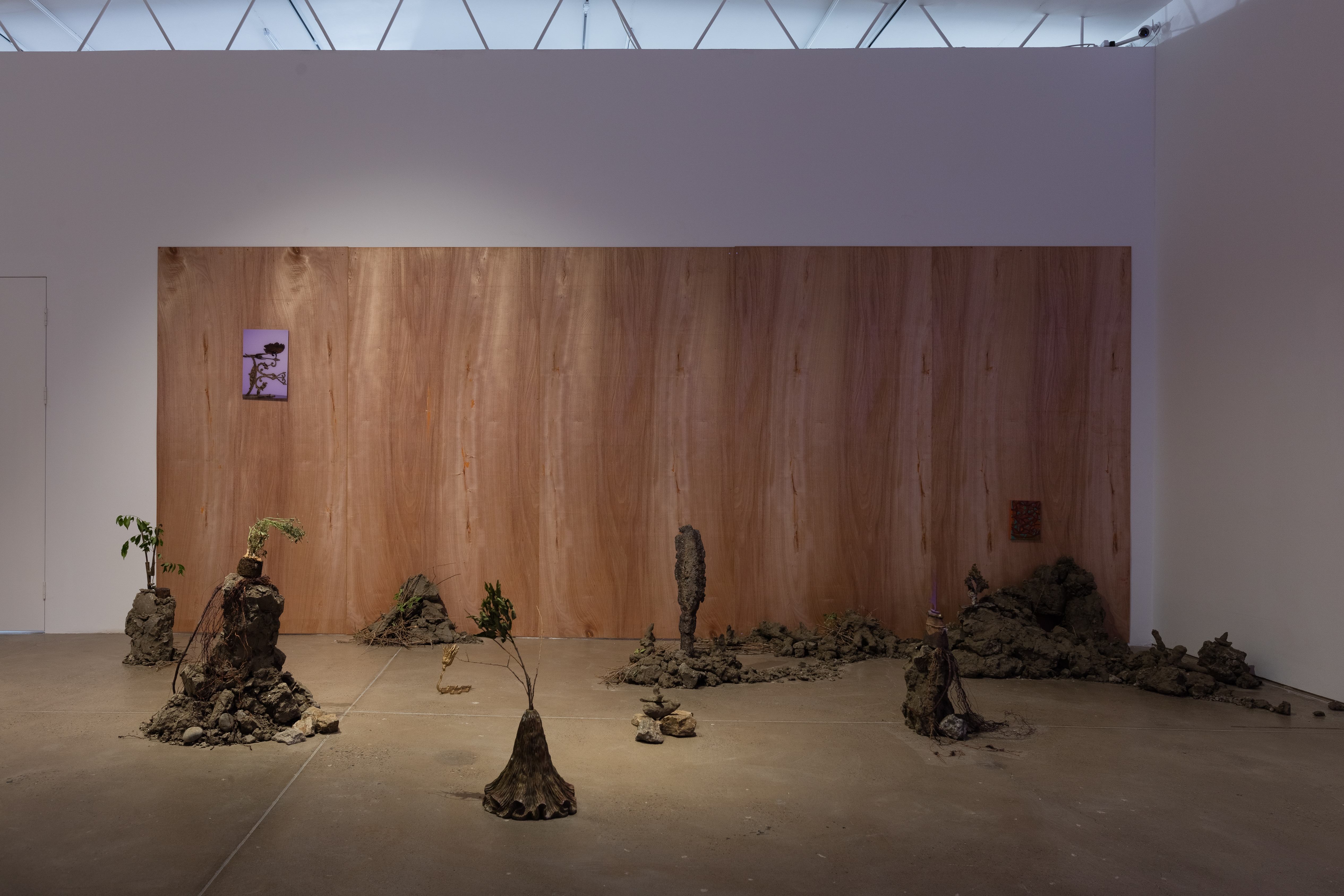
This body of work operates at the intersection of animism, ecological memory, and the shattered remnants of utopian dreams. Through sculptural installations, projected imagery, soundscapes, and field-based spatial arrangements, the artist constructs a post-utopian landscape—part archaeological site, part ritual field—where ancient belief systems and speculative futures converge. Situated in forests or exhibition spaces that resemble both shrines and war bunkers. Their ambiguous materiality—wood, stone, resin, soil, living plants, plastic, and metal—blurs the line between nature and artifact, living and non-living, sacred and synthetic.
The installation serves as a central axis. It explores natural worship, cultural power, and the philosophy of animism by tracing the symbolic resonance of stones, plants, animals, and seafaring. It reanimates the legacy of ancient ritual and magic through dynamic projections, interactive sculptural forms, and layered sonic invocations. These elements interrogate how animistic practices, historically dismissed as primitive, function as subtle yet powerful systems of belief and control—many of which persist today within the visual and symbolic codes of contemporary technology and ideology.
At the heart of the work is the “Horns of the Beast” field. Large-scale sculptural forms inspired by the jade zhulong (pig-dragon) of Hongshan culture, the ram-headed deity Amun of Ancient Egypt, and the stylized horn motifs used in luxury branding today, are transformed into totemic presences covered in moving projections. Each historical layer inscribes a different animistic logic: zhulong embodies the spiritual role of animals as mediators; Amun’s horns symbolize divine authority rooted in nature; and contemporary branding reduces such forms into emblems of commercialized power. When touched, these sculptures emit audio derived from reconstructed ancient ritual texts, invoking themes of spiritual protection, sovereignty, and fear—anchored in the animist idea that spirit is present in all things.
In contrast, the “Seafaring and Colonization” section traces how belief systems travel—both as expressions of cultural cosmology and as tools of conquest. Using a virtual ship and projection-mapped colonial trade routes, this installation overlays Polynesian navigation prayers with European missionary hymns, symbolizing conflicting yet intertwined logics of spirituality and domination. The ship glows like a talisman, a vessel of spirit and symbol, echoing the animistic belief that even journeys and objects hold consciousness. This spectral presence underscores how belief—once a source of refuge—can become an instrument of empire.
This inquiry expands into the study of Zhongzhou Island, a small yet historically and symbolically dense island located in the Min River in Fuzhou, China. Once a sacred Taoist site and later transformed by layers of imperial, colonial, and state urban planning, Zhongzhou Island embodies the palimpsest of animist cosmology, military occupation, and technocratic governance. Once called “Dragon Head Island”, it housed ancestral temples, geomantic monuments, and was later repurposed during wartime as a militarized space of surveillance and control. In recent decades, the island has become an ambiguous zone—caught between natural preservation, state redevelopment, and private real estate speculation. Its layered histories echo the contradictions of animism in the modern world: a spiritual landscape hollowed by governance and capital, yet still haunted by rituals, myths, and ecological memory. By folding Zhongzhou Island into this project, the work articulates a localized instance of failed utopia—one that reflects global patterns of how sacred ecologies are rewritten through regimes of power.

